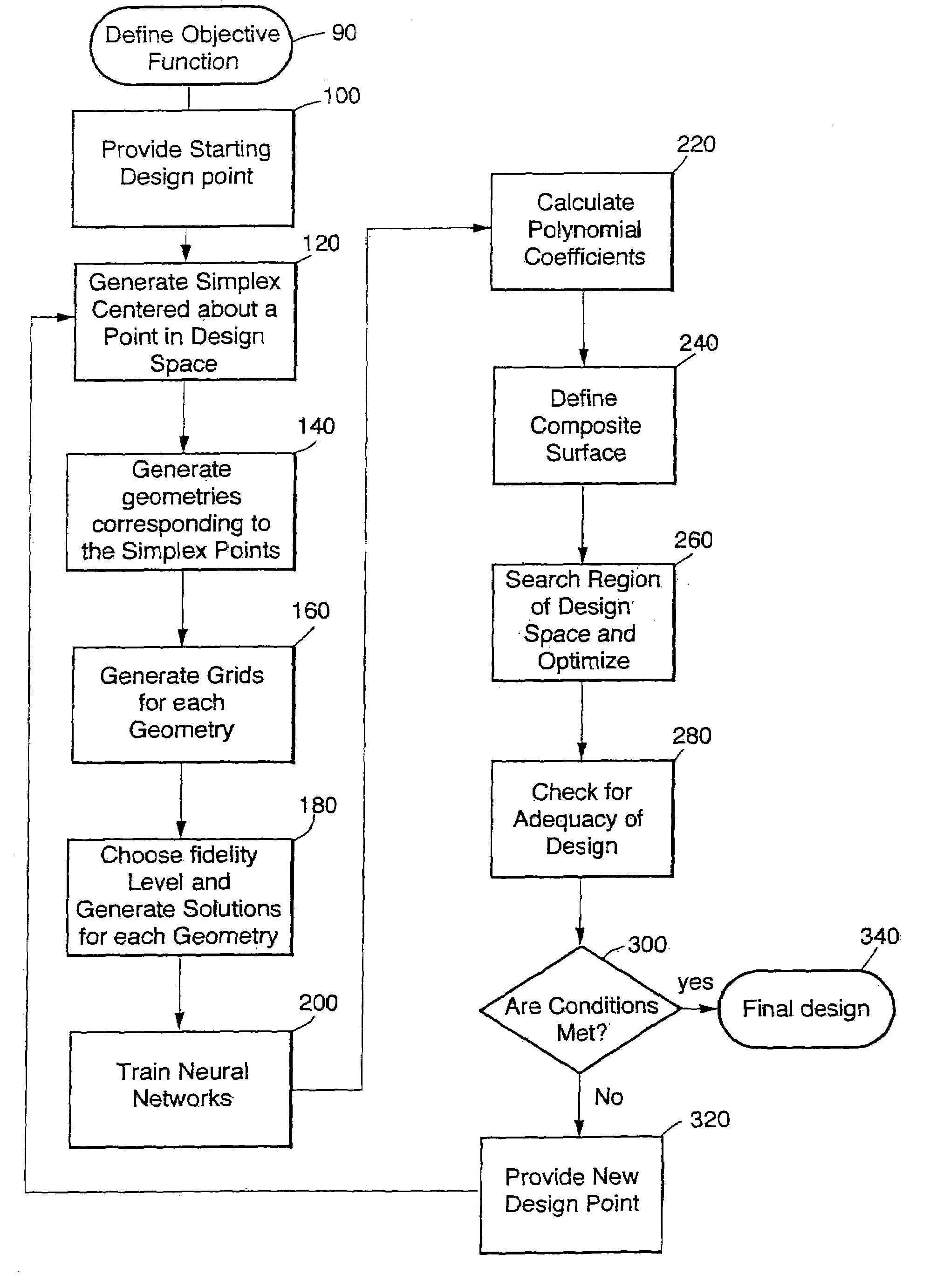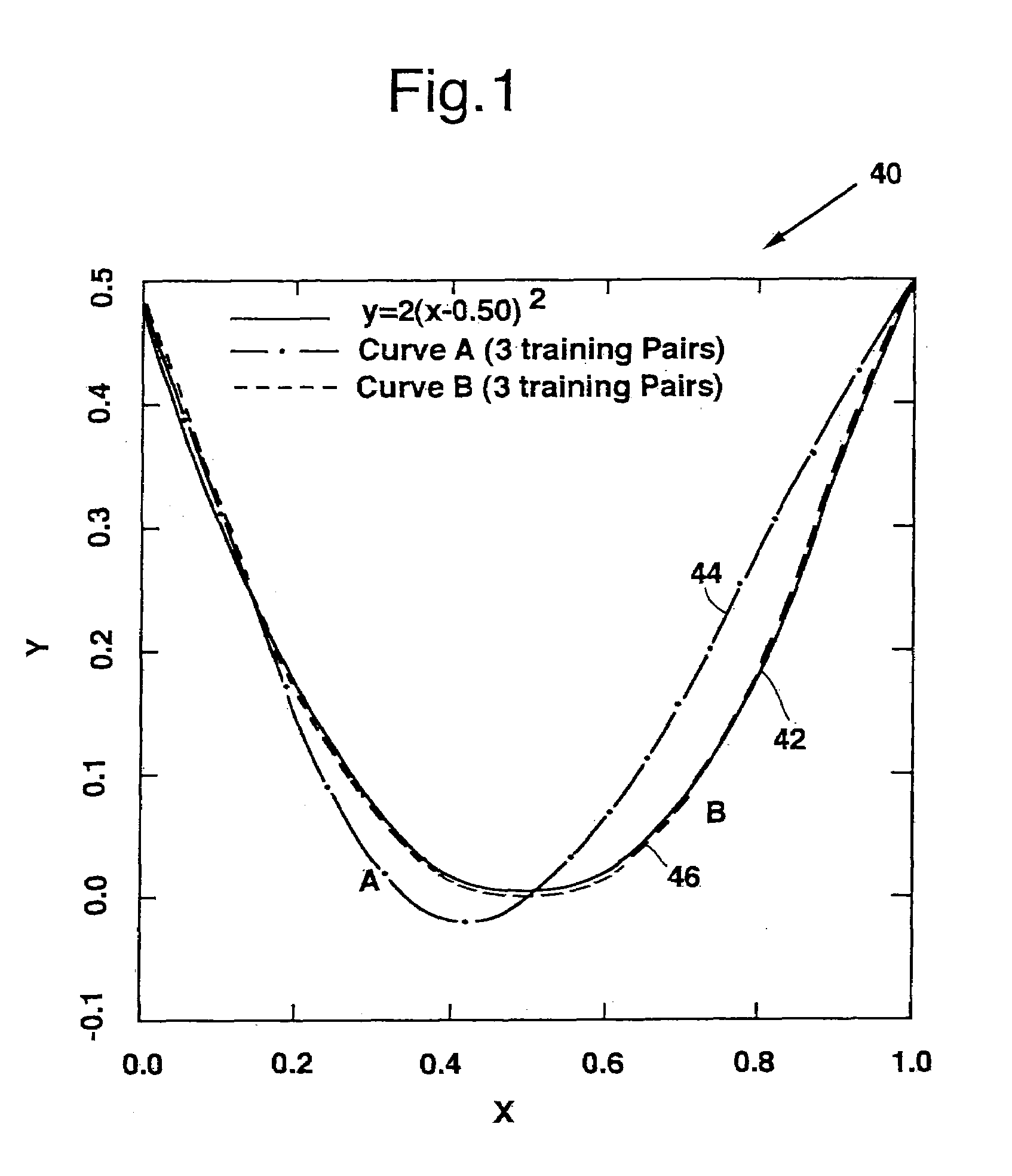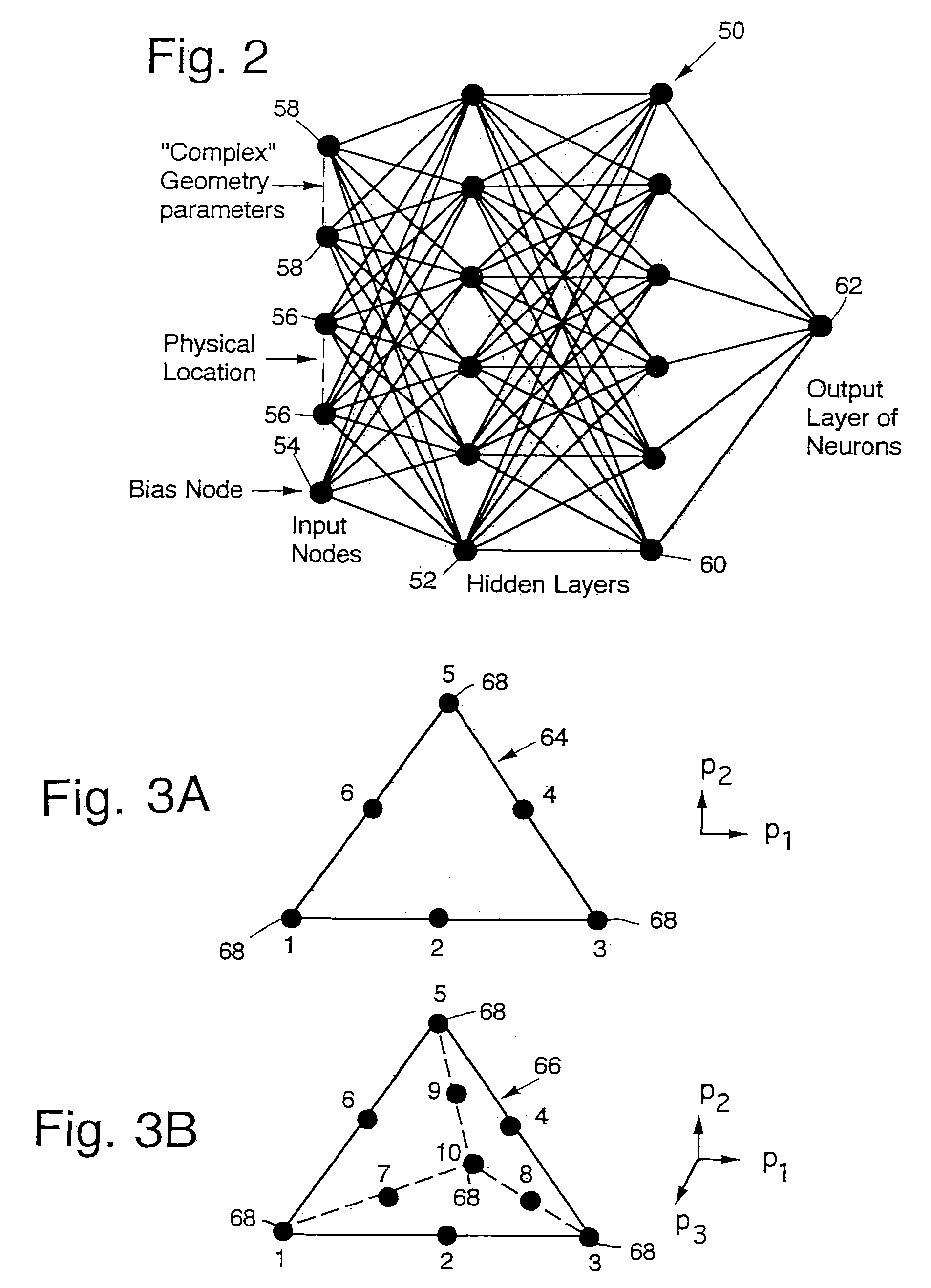Method for constructing composite response surfaces by combining neural networks with polynominal interpolation or estimation techniques
a neural network and composite response technology, applied in the field of composite response surface construction, can solve the problems of high computational cost, complex functional behavior modeling, and excessive simulation cost, and achieve the effect of reducing the computational cost of simulation-based design
- Summary
- Abstract
- Description
- Claims
- Application Information
AI Technical Summary
Benefits of technology
Problems solved by technology
Method used
Image
Examples
Embodiment Construction
[0020]In accordance with the invention, composite response surfaces are constructed using a combination of neural networks and other interpolation and estimation techniques (low order polynomials, Fourier transforms, etc.). By way of example and not of limitation, the composite response surfaces described herein will be constructed using neural networks and polynomials (as the choice of interpolation / estimation technique). It should be appreciated that the primary motivation for constructing a composite response surface based on neural networks and polynomials comes from a careful examination of the relative strengths of these two approaches in interpolating design data or in modeling. Neural networks provide a very general framework for estimation in multiple dimensions. FIG. 1 illustrates a graphical representation 40 of a parabola 42 given by
y=2(x−0.5)2, (1)
and the neural network approximations to this function. The network is shown trained with three training pairs 44 (Curve A)...
PUM
 Login to View More
Login to View More Abstract
Description
Claims
Application Information
 Login to View More
Login to View More - R&D
- Intellectual Property
- Life Sciences
- Materials
- Tech Scout
- Unparalleled Data Quality
- Higher Quality Content
- 60% Fewer Hallucinations
Browse by: Latest US Patents, China's latest patents, Technical Efficacy Thesaurus, Application Domain, Technology Topic, Popular Technical Reports.
© 2025 PatSnap. All rights reserved.Legal|Privacy policy|Modern Slavery Act Transparency Statement|Sitemap|About US| Contact US: help@patsnap.com



